Clark Gully: Birthplace to the World
by Chris Clemens
Upstate New York has no shortage of waterfalls and the tremendous little day hikes that approach them. The one located in the ravine at the base of Canandaigua Lake has been on my ‘Upstate Bucket List’ for years now after reading about the Seneca folklore that accompanies the spot. I finally took the opportunity to walk back and see where a fairly unknown legend tells the story of how the world began, right in Clark Gully.
South Hill is a towering moraine created by glacial movements back some 15,000 years ago in the High Tor Wildlife Management Area at the south end of Canandaigua Lake in Naples. A ravine descending from the hill hosts a creek that ultimately feeds the lake and has been cutting through the deep shale for centuries while creating a cascading set of small, tranquil waterfalls. It’s a classic Finger Lakes scene that most of us who have spent any time in the region have seen time and again, though it never ceases to be beautiful in any season.
While the Senecas who once called the area home believed all things in nature to be sacred, Clark Gully held somewhat of a particularly important place in their storytelling. The Senecas referred to themselves as Onodowaga, which translates to “people of the great hill”. That hill they were referring to was South Hill, though the word they used for it was Nundawao.
Legend tells the story of how their origin began in the very spot that today we call Clark Gully. The Senecas believed at Kanandague, which translates to ‘the chosen spot’, the earth opened on Nundawao and their founders emerged to populate the land. Kanandague might sound familiar if you try and pronounce it, because today we call it Canandaigua.
There is a small dirt parking area at the base of the trail to the gully, and a larger DEC lot right where Sunnyside Street turns in to West Ave. A trail runs each side of the stream, though the one of the left side is much clearer. A few signs and yellow paint markers on trees will point the way, but basically you will follow the stream and at some points will need to walk right in the creek bed until you reach the base of the first waterfall.
The walk to the base of the first waterfall is mostly straightforward and easy, though some rocky terrain and meandering trails over some stone areas I would say would put the path overall at ‘medium’ difficulty, but it’s still not much of an uphill climb. Once you reach the base of the falls, the climb gets to ‘difficult’ almost immediately. On each waterfall, someone has tied a rope to the base of a tree so that anyone wanting to scale the falls can use it as a guide. Against my better judgement, I snagged the end of each rope and scaled all three waterfalls. A few locals were providing tips and guidance, one of which was that it was ‘easy’. It’s not the hardest thing I’ve climbed in my life, but I think ‘easy’ was glossing over a bit of the truth.
I will say though, that both the view and being able to stand in the precise spot were some believed the world began, totally made the uneasy climb worth it. Calming pools of water at the base of a trickling falls couldn’t possibly have been more serene and inspiring. With a little burning of some ceremonial tobacco as an offering to the gods for a safe trek back to the bottom, it was easy to imagine why the first humans to walk the Earth would have chosen that very spot to ascend on the world.
-
Resources and Additional Reading
Canandaigua Lake, N.Y.: Of Indian Legends and Sylvan Trails
Lower Clark’s Gully on NYFalls
Clarks Gully on GoWaterFalling.com
Seneca Indian Fact Sheet on BigOrrin.com
Sacred Clarks Gully on JubileeInitiative.com

Chris Clemens is the Founder/Publisher of Exploring Upstate. From his hometown in Rochester, he spends as much time as possible connecting with the history, culture, and places that make Upstate New York a land of discovery. Follow him on Twitter at @cpclemens

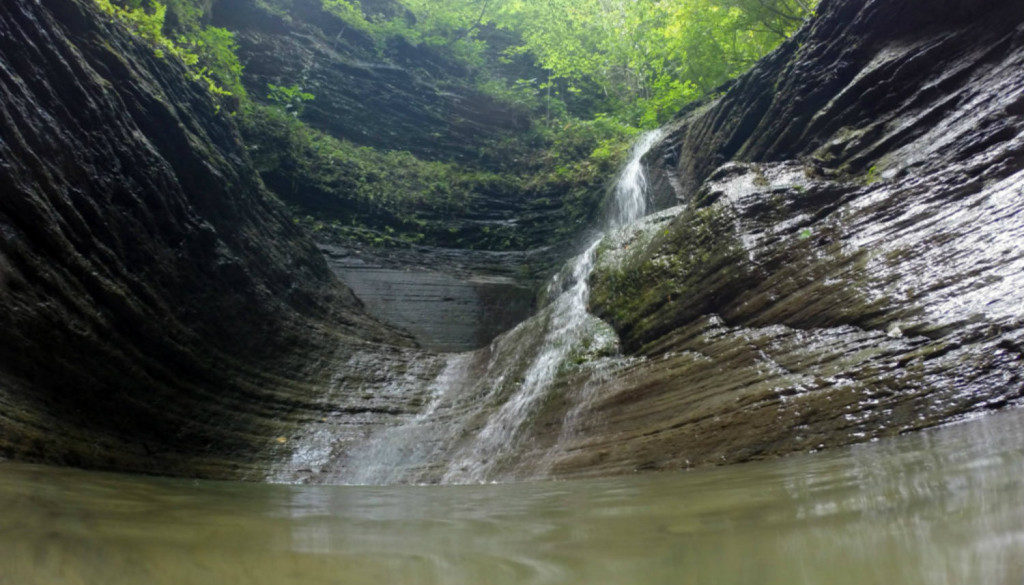
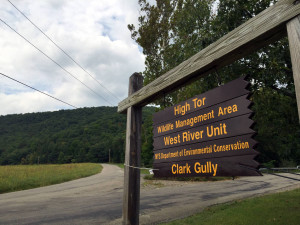
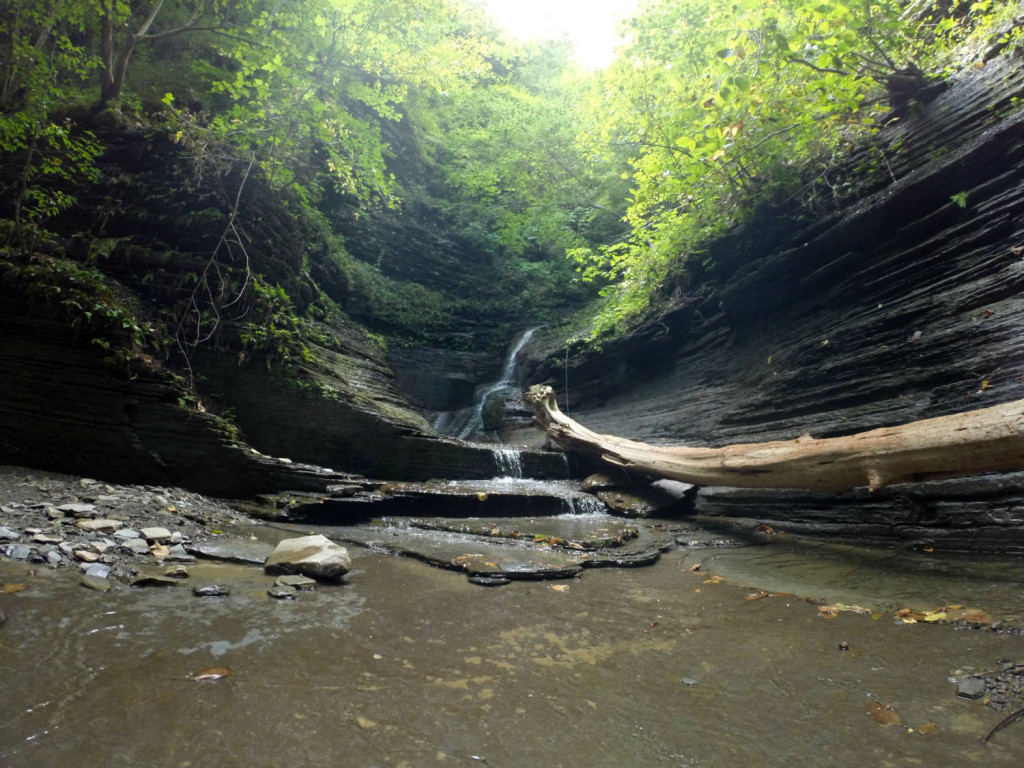
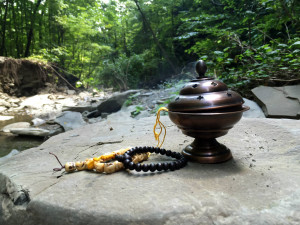
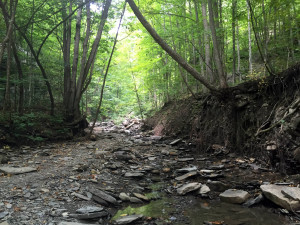

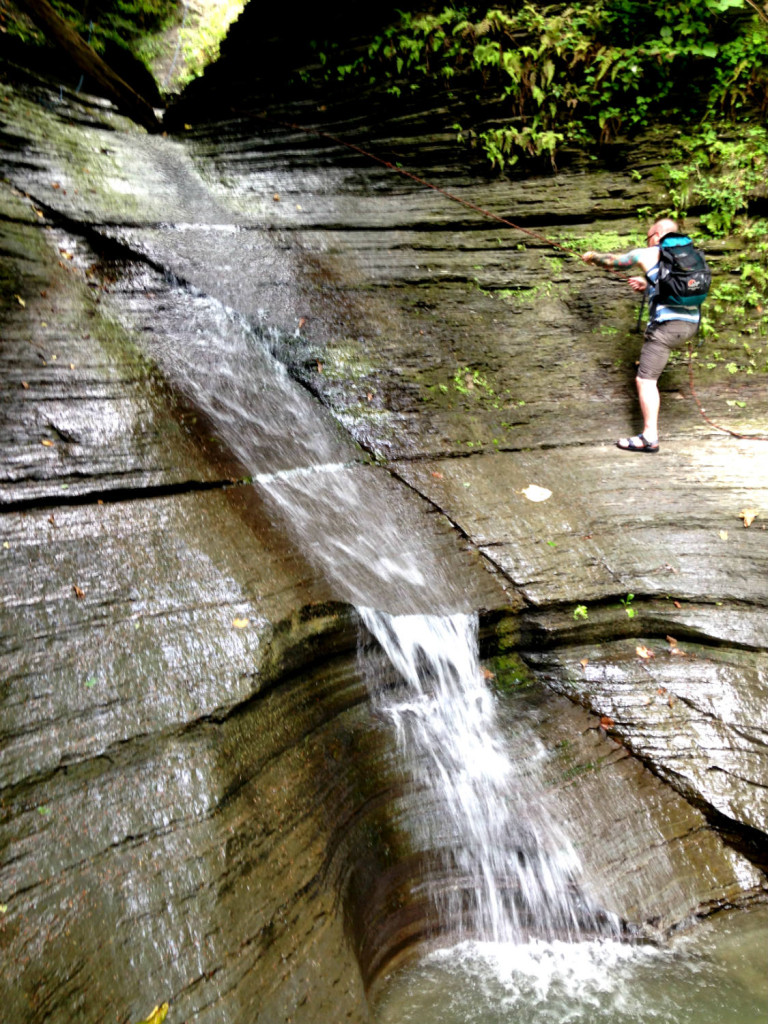

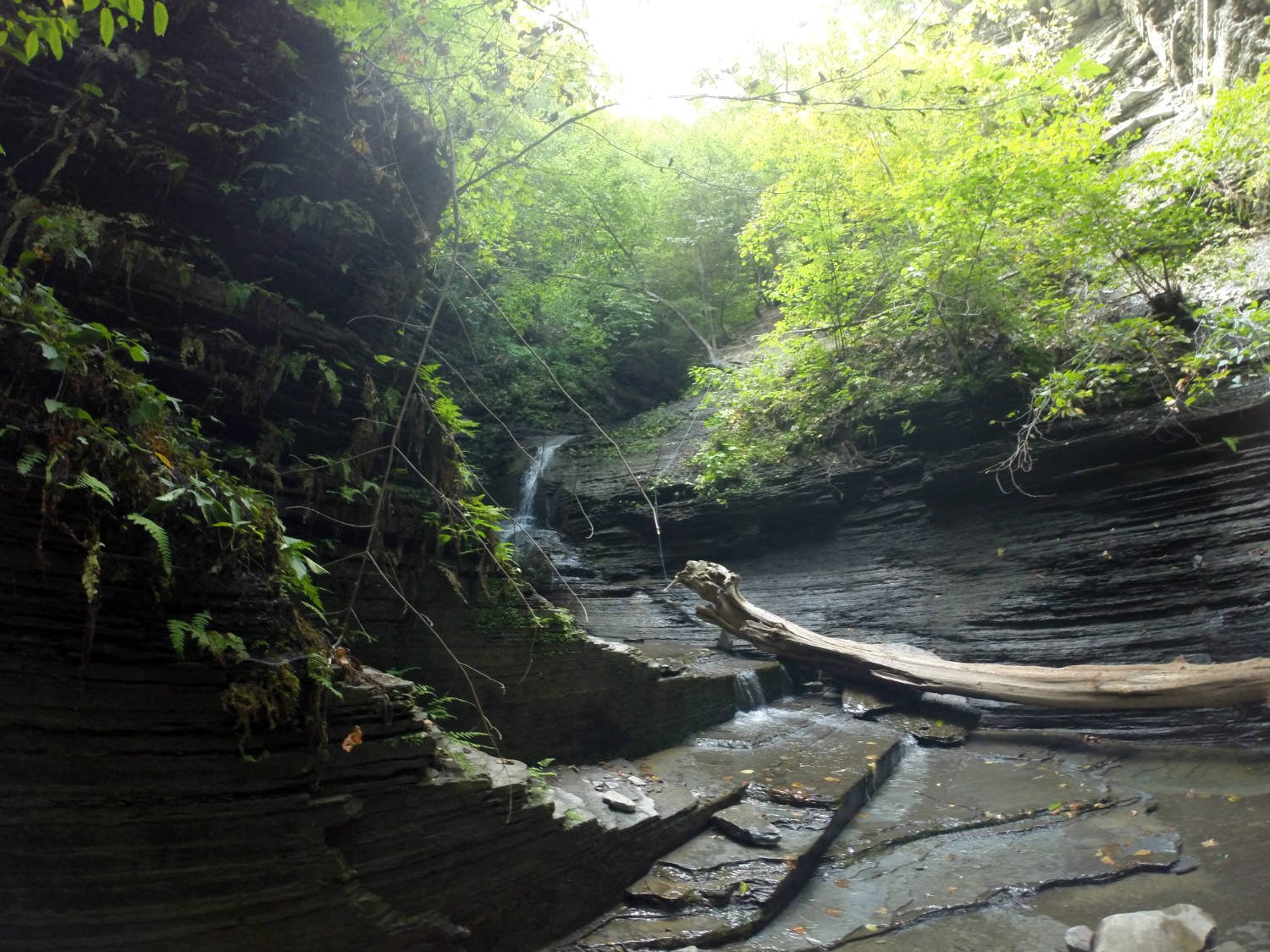
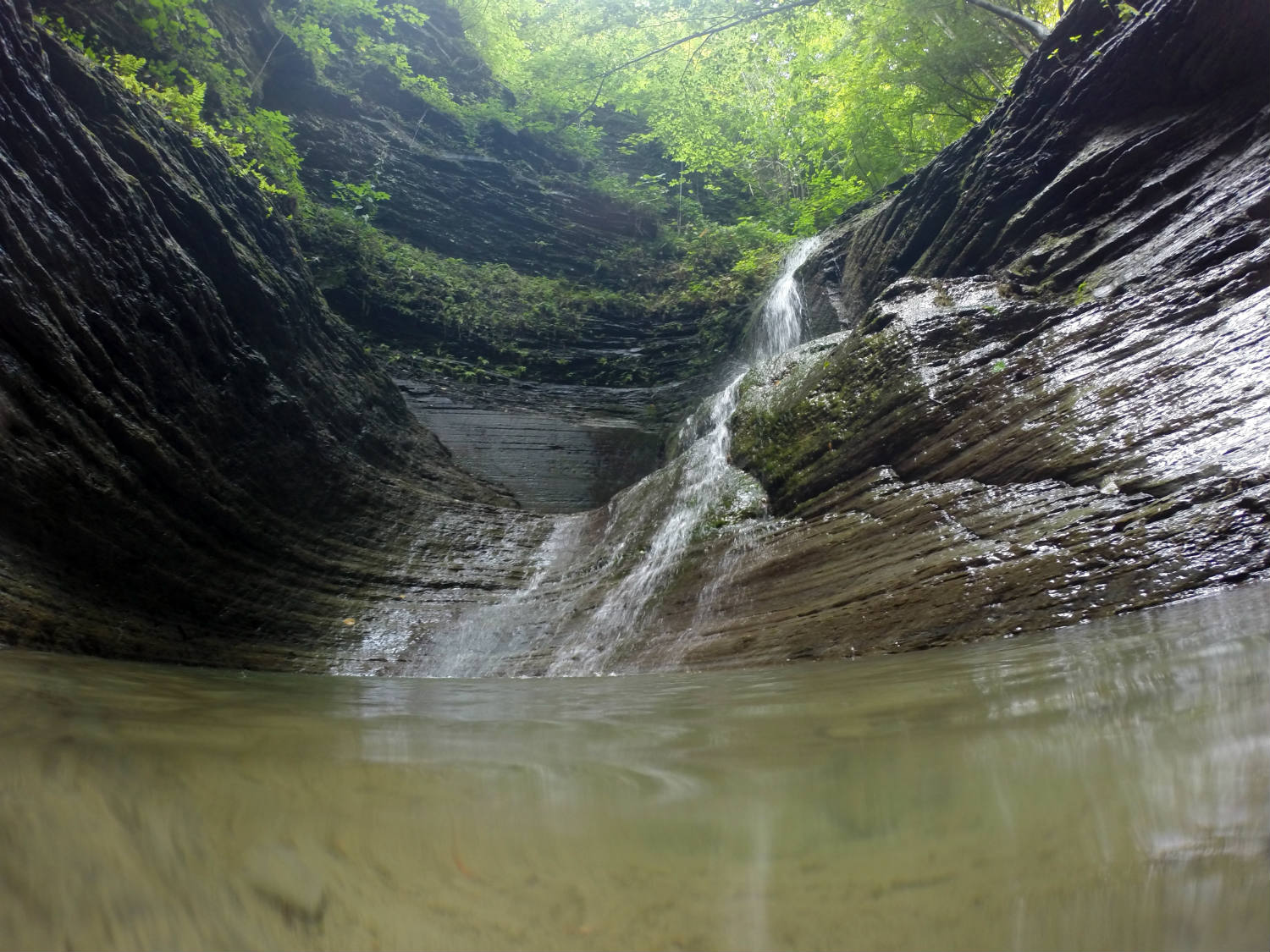
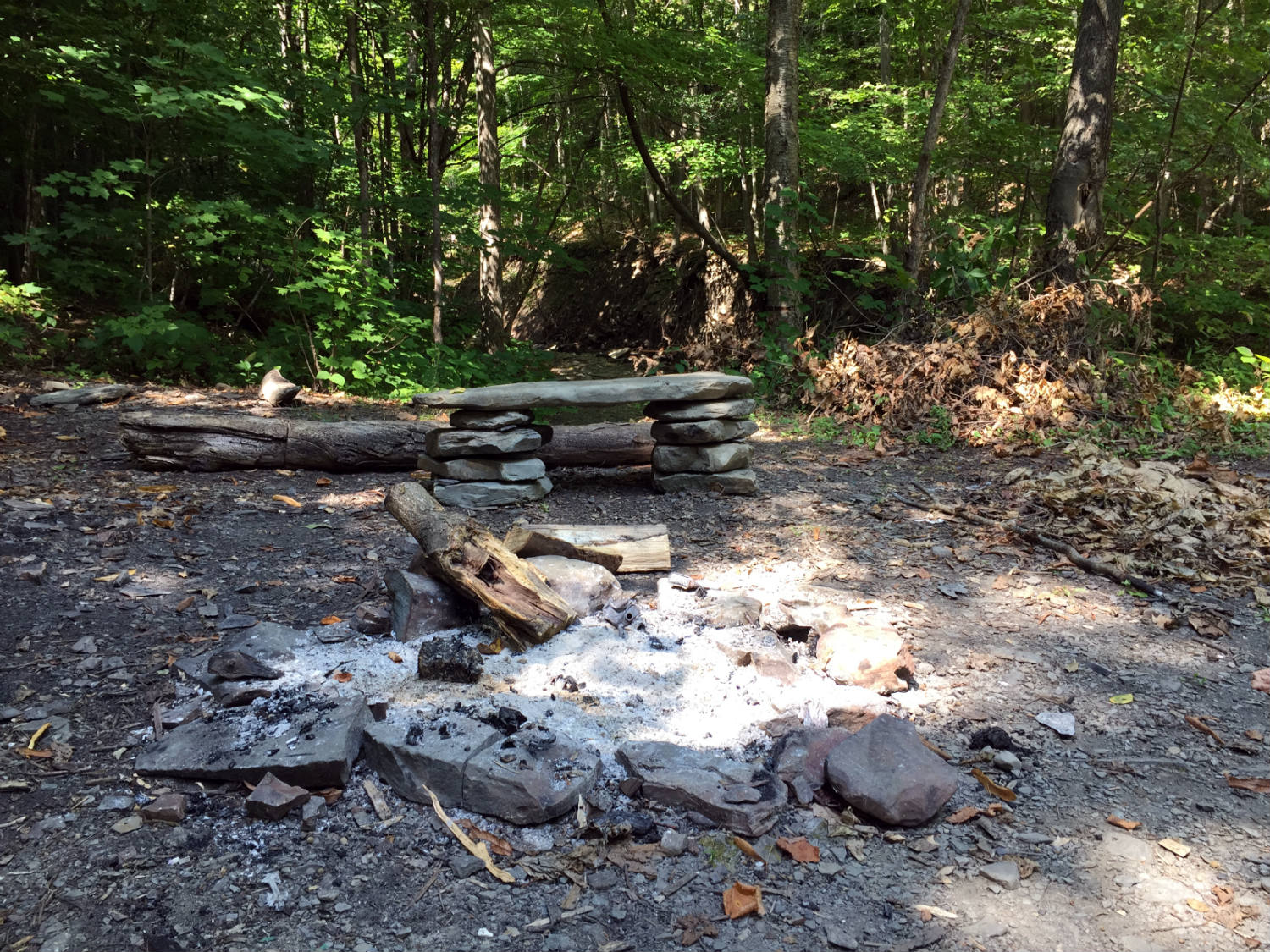





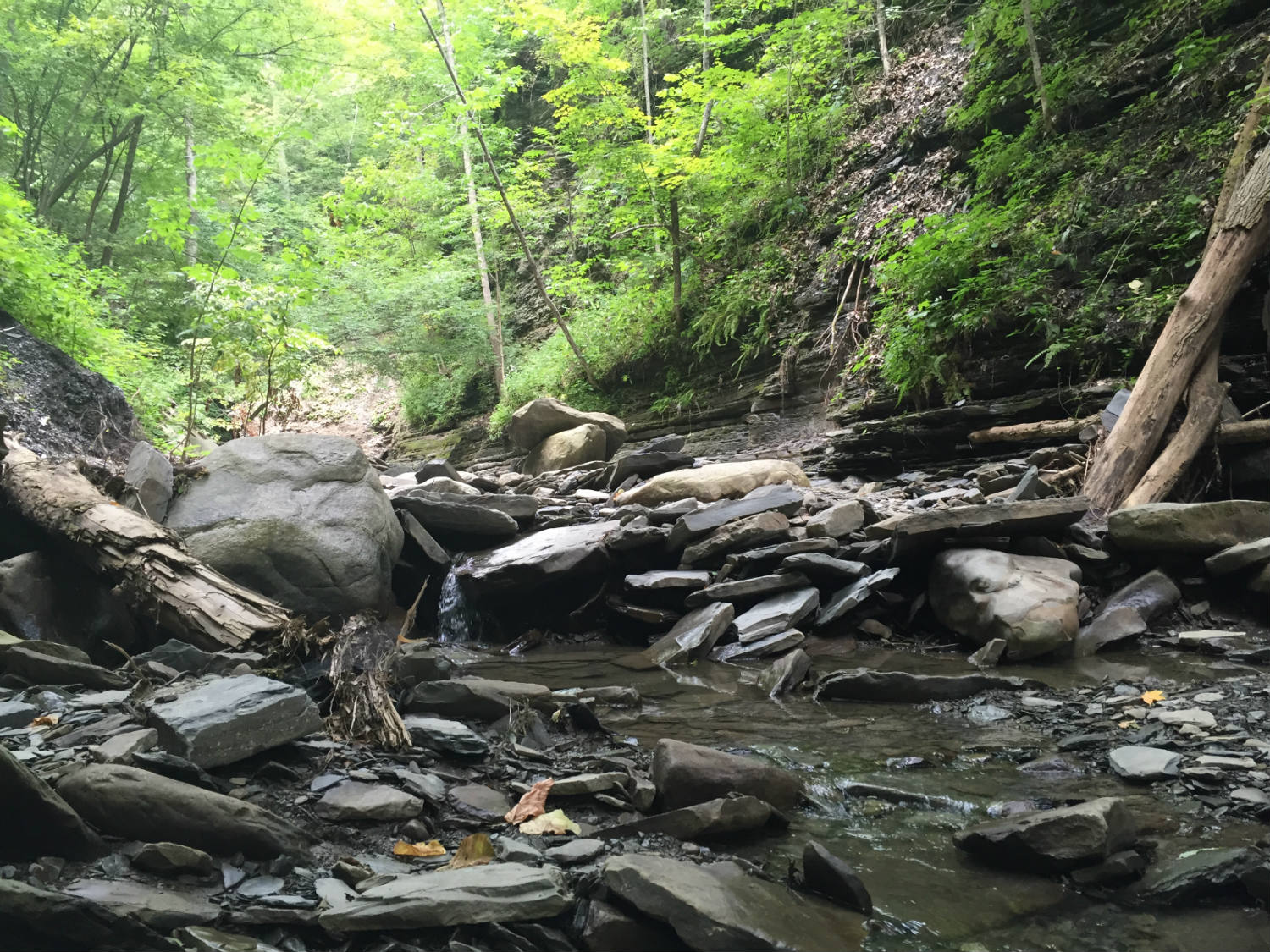
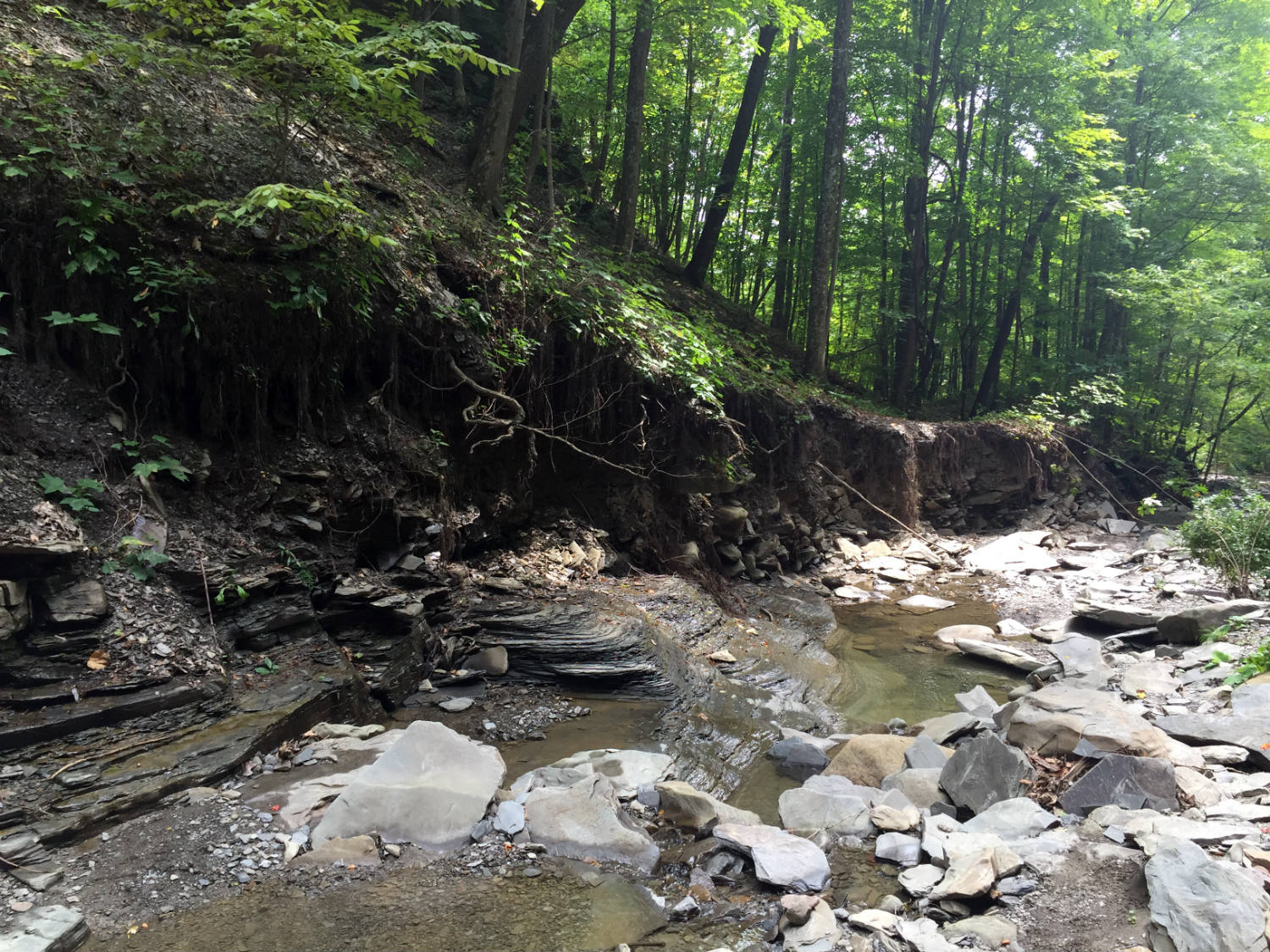




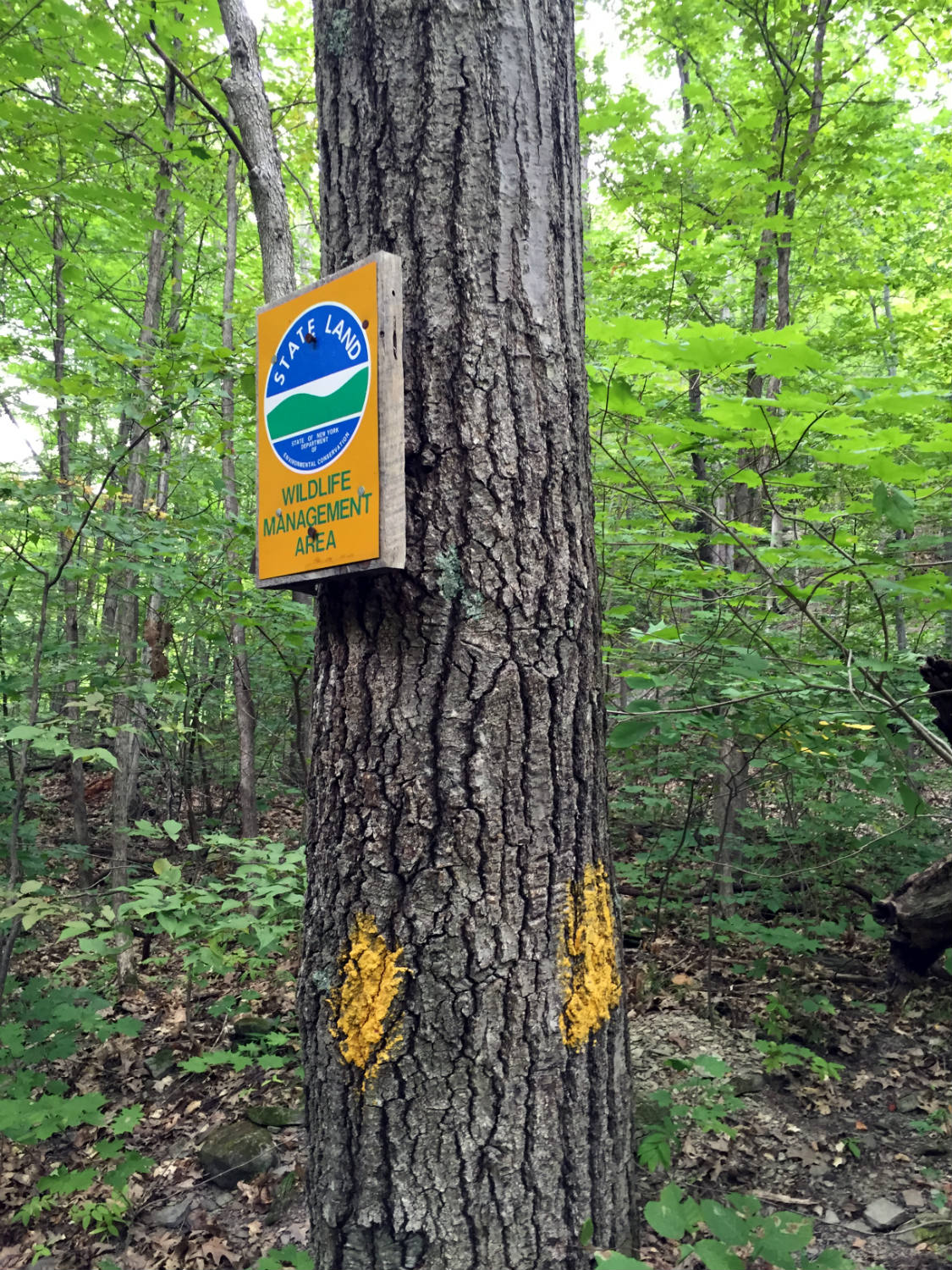



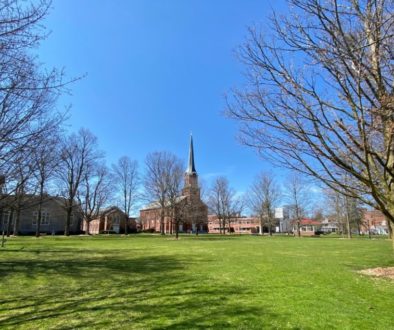

September 6, 2015 @ 9:43 am
Damn, I found Grimes Glen but not this place! Will have to go back soon.
September 10, 2015 @ 9:47 pm
Grimes is a fun one too! Haven’t been there in ages. Probably time for a visit. Clark Gully is probably 20 minutes east or so from Grimes.
September 6, 2015 @ 9:55 am
OMG, Don’t let your Mother see that pic of you on the rope. She’l have a heart attack!
September 10, 2015 @ 9:48 pm
I made it out safely. 🙂 Ironically, I DID get hurt that day, but by picking up a beer bottle someone had tossed so I could carry it out of the park, and ended up cutting myself on it!
September 6, 2015 @ 10:08 am
Great post! I’ll need to take Ryan there for a visit.
September 10, 2015 @ 9:48 pm
Younger people are probably better climbers than us, too. 😉
September 6, 2015 @ 3:10 pm
Contemplation of God and appreciation of Nature – always a great combination! thank you.
September 10, 2015 @ 9:50 pm
Glad you enjoyed this one too. It was a special place to be for a bit and nice to tap into the peace!
September 7, 2015 @ 7:38 pm
There is a local Buffalo historian whose area of interest is in sacred geography/”Enchanted Landscape”; at one of his lectures he revealed a [Native American?] legend that the Star People were ‘delivered’ to Earth in Buffalo, on the Creek. Unfortunately I cannot recall all of the details. Have you heard of this?
September 10, 2015 @ 10:00 pm
Jenifer, thanks for your comment. The story sounds like something I’d be super interested in. Since you left it here, I’ve spent some time the last few days trying to dig up more and have come up empty handed. I found a group called the ‘Buffalo Star People’, but they’re in another part of the country altogether. I’m far from an expert in Native folklore, but I know a lot of stories involve the Earth and things around us, so the concepts you mention could totally be something from a local tribe, just not one I’m familiar with. Sorry! If you ever find it and want to share though, get back in touch!
September 7, 2015 @ 8:41 pm
Clark’s Chasm (as my family always called it) is a great place! I spent a lot of time there as a kid. This is a very informative article. However, I’d just like to point out that South Hill is not a moraine. A moraine is a line of debris created at the edges of a glacier. If South Hill was a moraine, when you walked into Clark’s Gully you’d see an unsorted mix of gravel, rocks, sand, and clay. Instead you see those shale walls, because South Hill is solid, and actually part of a dissected plateau, an originally flat, raised area which was carved into by (in this case) glaciers, creating the signature U-shaped valleys on the area, along with the Finger Lakes. The Gully formed later.
September 10, 2015 @ 10:02 pm
This is great info Liam, thanks!! I admit that I didn’t pay as close attention in science class as I should’ve. I have always struggled with the difference between a moraine and a drumlin. Would South Hill be a drumlin then? Or am I just grasping at geological buzzwords?
September 11, 2015 @ 12:33 am
Haha, no worries, I study environmental science, so I know a little bit more than average. I’m afraid you’ll off the mark again. A drumlin would, like a moraine (or several other glacial landforms), be an mass of dirt and gravel, not solid stone. Also, there aren’t any drumlins around there, most of the drumlins in upstate are all in the more open area north of the Finger Lakes. If you’ve ever walked up and down the streets of Syracuse, you’ve walked up and down drumlins. So, no, South Hill is just what I said, part of a dissected plateau.
November 4, 2015 @ 10:12 am
Great article! I have also hiked up Clark gully in the past, its a great place. just a minor “FYI’..you said: “South Hill is a towering moraine”..that’s not correct, it isn’t a moraine. South hill is a..hill! 😉 or even a mountain, (depending on how you define hill versus mountain.) but its way too large to be a moraine. A glacial moraine can be a small hill, but they usually aren’t very high, and they are totally comprised of loose gravel and dirt. it’s basically a gravel deposit left on the ground by a glacier. South hill is solid rock, bed rock. It existed before the glacier and was not created by it.. It was carved and smoothed somewhat by the glacier, but it wasn’t deposited by the glacier, as a moraine is.
November 4, 2015 @ 10:15 am
doh! *after* I posted, the recent comments about the hill’s composition came up! 😉 I didn’t see them before..sorry about that..Liam already explained the hills composition.
Finger Lakes NON-Wine Trail: Canandaigua Lake |
April 7, 2016 @ 7:32 am
[…] that feeds the idea that Canandaigua Lake is sacred. Senecas believed that the Earth opened up in Clark’s Gully, and their forefathers first emerged from the gully to populate the Earth from that very […]
April 17, 2018 @ 8:00 am
Wow… If more people left comments like these. I have been hanging out there for years and after reading this gained even more appreciation for what is right under my feet. Thanks
March 6, 2021 @ 9:21 am
I FOUND A ROCK IN CLARK GULLY SUNNYSIDE NAPLES WHEN I WAS YOUNG AND STILL HAVE IT IS THERE ANYBODY WHO CAN GIVE ME ANY INFORMATION ON THIS